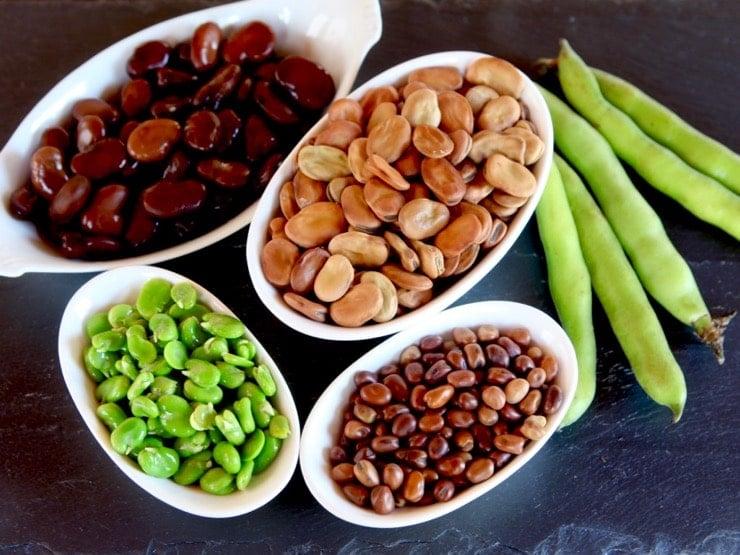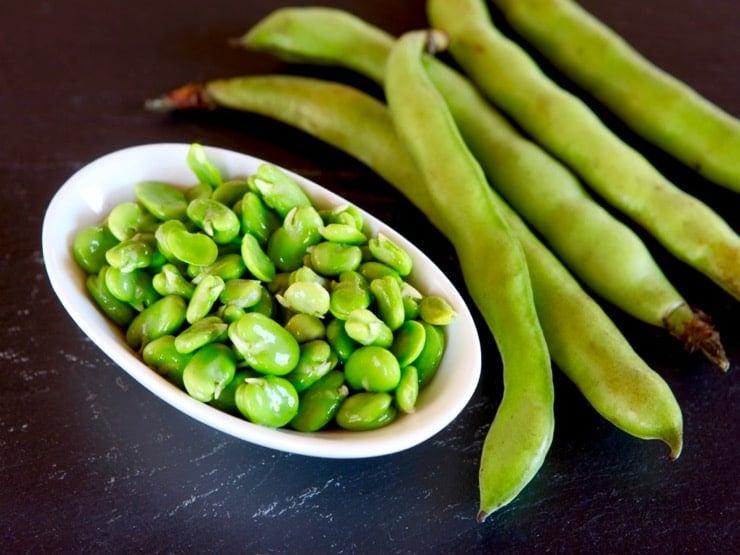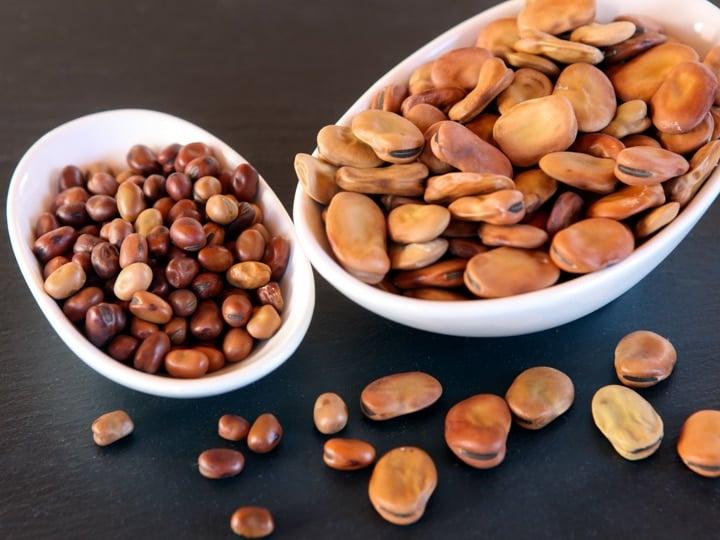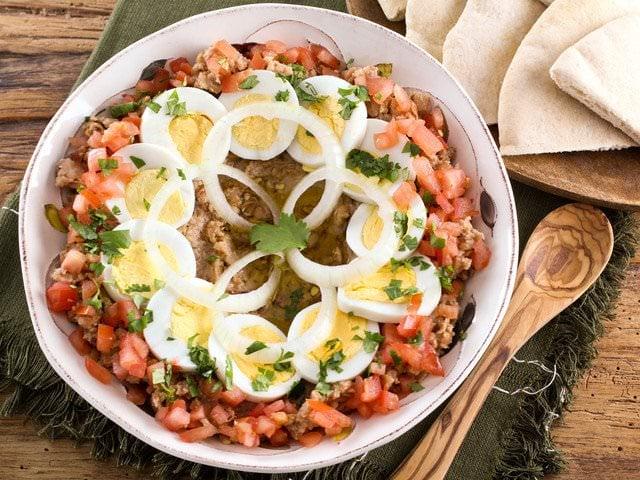There are so many different varieties of fava beans available today, and preparation techniques vary widely. It can be confusing! Fava beans can be purchased fresh in the pod, large and dried, small and dried, canned, frozen, or as a fresh sealed cold pack. My hope is that this post will answer all of your questions on how to prepare fava beans, so you can stop wondering and start eating.

Fava beans are one of the oldest domesticated food legumes. References to favas occur in both the Talmud and the Mishna, indicating they have been part of the Middle Eastern diet since at least since the 4th century.
Tova Dickstein from Neot Kedumim Biblical Land Preserve in Israel once told me that fava beans were likely a main protein sources for the ancient Israelites. In fact, the ancient method for cooking fava beans is discussed in the Talmud. The dried beans were immersed in a pot of water, sealed, then buried beneath hot coals so they could slowly cook.

Beans are a great source of fiber, protein, fiber, iron, B vitamins, potassium, magnesium and many other beneficial nutrients. If you have never tried fresh fava beans, they’re really special- they have a mild, creamy flavor that compliments many spring dishes. Fresh from the pod they are bright green and very pretty. They have a short season, though. If you’re looking at making a fresh fava bean recipe outside of spring, your best bet is to use frozen fava beans or use fresh/frozen lima beans as a substitute. Lima beans are not the same as fava beans, but they are similar to fresh peeled and cooked fava beans.

Dried fava beans, when cooked and peeled, have a texture similar to cooked chickpeas but slightly softer. Unlike fresh fava beans, dried can be enjoyed year-round. They are more economical than canned beans, and when you soak and cook them they do not contain unnecessary additives like sodium (plus you don’t have to worry about potentially toxic BPA can linings).
Most forms of fava beans need to be peeled before eating, unless they have already been prepped (which is sometimes the case with canned and cold packed beans). It’s a time-consuming process, but not difficult at all. I have outlined the peeling process below. Some people recommend leaving the shells on small dried fava beans after a long slow cook, but I find them to generally be quite tough and not great for eating. Depending on your usage, peeling is usually the way to go.
A quick but important note — fava beans are a trigger food for G6PD, a hereditary enzymatic deficiency. Those who have this deficiency can develop anemia (potentially severe) from eating fava beans. Populations with the highest percentage of people affected by the deficiency include Sephardic Jews and those of Mediterranean and African heritage. People who are diagnosed with G6PD should not consume fava beans, and if you ever experience symptoms or discomfort after eating them you should be tested for this genetic deficiency.
I hope this tutorial is helpful as you explore the wondrous world of fava beans! By the end you’ll be a fava bean master.
Recommended Products:
Colander
Sauce Pan
Note: Nutrition information above refers to 1/4 lb. fresh shelled fava beans.
Fava Bean Recipe Ideas:
Ful Mudammas

Falafel – Egyptian Fava Bean Version



